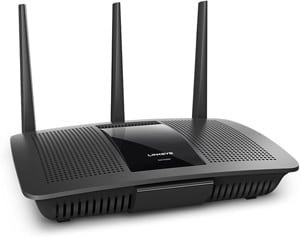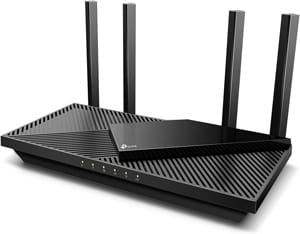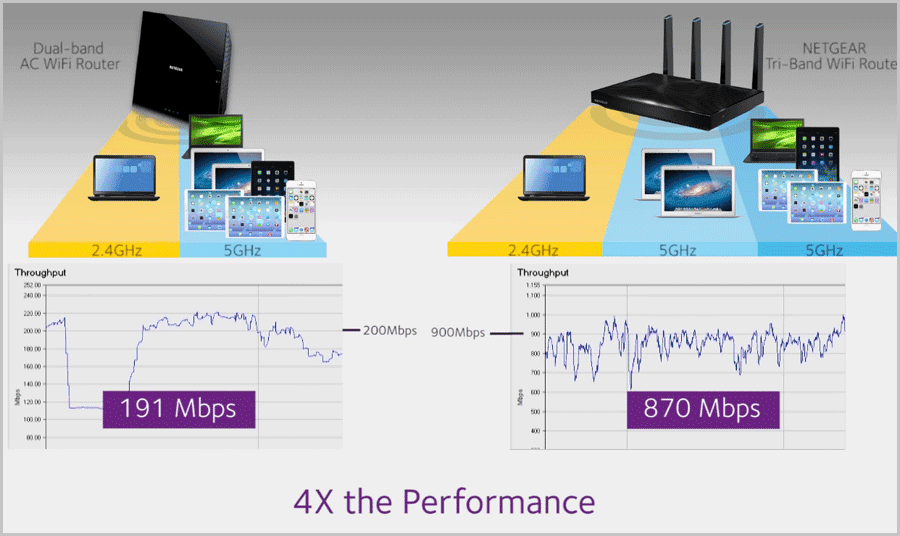Here are the best VPN router for small business in 2023. In fact, this is the ultimate router guide you’ll ever need.
I’ve put forth my top 5 router recommendations for small businesses. And yes, home routers aren’t the same as business routers, or vice-versa.
I’ve also explained in the simplest of words the complex router terms so you know what you’re buying.
Finally, nothing on this list costs $500+. Do note that there are much better routers than the ones mentioned on this list. However, I’ve only listed the ones which make sense in terms of features and also their pricing.
Let’s get started then?
How to choose best vpn router for small business?
Just because you own a business, doesn’t mean you’re also familiar with routers, or technology in general.
So, this is the ultimate guide for you when picking up a router for your business.
You may or may not go with one of the routers listed below. However, be sure to check these points when picking your router and you should be golden.
(If the terms are too complex for you, scroll down to the end of this guide. I’ve explained in detail which terms mean what and why you should care).
- WiFi standards: Try to go with 802.11ac routers instead of 802.11n or older standards.
- 11ad/ax standards: When available, prioritize ad/ax standards. If you wish to learn the “why”, scroll to the bottom of this guide.
- MU-MIMO: Go for routers with MU-MIMO enabled.
- Number of bands: Most dual-band routers will be enough for you. However, tri-band routers too are available and are the better choice.
- Hardware: The more RAM and better processors you can go for, the better the router performs. Also, the specs have some influence on which security protocols the router can use.
- Security protocols: Avoid anything that only has WEP. WAP or WAP2 are the bare minimums you should aim for. I’ve discussed these in-depth towards the end of this guide.
- VPN Compatibility: Not all VPNs support direct VPN installation on the router. Go with the ones which do. All the options on this list do support VPN as it’s a list of the best vpn router for small business.
- Number of ports: The more ports generally mean more convenience, especially 3.0s.
- Additional features: Routers with Beamforming(+) and Link Aggregation will offer you stronger and faster connections in specific situations.
The 5 Best VPN Router for Small Business in 2023
Here’s an overview of everything I’ve covered in this guide:
- Netgear Nighthawk x10
- Synology RT2600ac
- ASUS RT-AX88U
- Linksys EA7500
- TP-LINK AX 3000
- Understanding router terms
- Wi-Fi standards- ac vs. ad vs. ax
- MU-MIMO
- Security- WEP vs. WPA vs. WPA-2
- Beamforming
- Link Aggregation
- 4Ghz vs. 5Ghz bands.
Let’s get started then?
1. Netgear Nighthawk x10
“Perfect balance between features and pricing”.

Here’s an overview:
- Price: About (Check and buy here).
- Bands: 802.11ac/ad
- Wireless range: 2500 sq. ft
- Tri-band
- MU-MIMO
- Beamforming+
- Link aggregation
- Alexa voice controls
- 7Ghz processors
- 1GB RAM
- 6 LAN Ports
- 1 WAN Port
The Nighthawk x10 is one of the few routers on this list supporting the 802.11ad standards. That means the 60Ghz band and extremely fast speeds, theoretically capping at 7.2Gbps. Being Tri-band, it can support more devices with better speeds.
Its 160MHz frequency is another gift which offers 2x Wi-Fi speeds when connecting to mobile devices.
The hardware is equally impressive. It flaunts a 1.7Ghz processor and 1GB RAM. It offers 4 ports.
It’s also compatible with Alexa voice controls. There’s MU-MIMO as well as Beamforming+. These work together to get you some of the fastest speeds in the industry.
It has 6 LAN ports. Because it supports Link Aggregation, two of these ports can be combined for extremely fast connections and data transfer. 1 WAN port is available.
You can customize it using the admin panel with ease. Block unblock websites for your children and a lot more.
2. Synology RT2600ac
“Impressive customizations acceptable speed, inexpensive”.

Overview:
- Price: (Check and buy here).
- Bands: 802.11ac/ad
- Wireless range: 2500 sq. ft
- Dual-band
- MU-MIMO
- Beamforming
- 7Ghz processors
- 512MB RAM
- 4 LAN Ports
- 1 WAN Port
- Dual WAN
- VPN support: Yes
- No Link aggregation
The Synology RT2600ac has a range of about 3,000 sq.ft which is perfect for most small-biz offices.
It uses the 802.11ac band and does offer MU-MIMO capabilities. Beamforming too is supported.
It has 4 LAN and 1 WAN Ports. One of its primary features is its dual WAN. When needed, one of the LAN ports can be converted to a WAN port.
It lets you use two different ISPs at the same time. This helps your business if one of your ISPs frequently goes down or you simply need two different internet speeds.
What makes it one of the best wireless vpn router for small business? Its customization and security features. It lets you create profiles and allow/block certain websites for them. The router also features in-built DDoS protection, bandwidth management, and threat prevention.
It can be used as an advanced VPN server letting you create secure networks for your employees and even remote teams.
It can even be turned into a complete multimedia server. Using SD Cards or USBs, you can share and/or stream files on connected devices with ease.
3. ASUS RT-AX88U
“One of the best routers money can buy”.

Overview:
- Price: (Check and buy here).
- Bands: 802.11ax and older
- Dual-band
- Dual WAN
- MU-MIMO
- Beamforming
- 8Ghz processors
- 1GB RAM
- 8 LAN Ports
- 1 WAN Port
- VPN support: Yes
- Link aggregation
This one’s expensive. I’m just being upfront so you don’t waste your time on this router if you’re looking for more budget-friendly options. Also, if you’re looking for small office vpn router, this definitely isn’t “small”. However, it sure is one of the best wireless VPN router for small business in 2023.
For starters, it supports the 802.11ax standards. These are faster than the more common 802.11ac standards most options on this list are offering. In fact, it can “theoretically” offer upto 6Gbps which is impressive.

(Image source: Amazon).
It even has a “target wake time” feature. This lets you schedule when your devices wake up/sleep saving them battery.
It’s the only router on this list offering 8 LAN ports. You can connect most of your workstations with a wire if you wish to. It does provide MU-MIMO.
For Beamforming, ASUS has its own version of it and calls it AiRadar Beamforming which is provided with the router.
It not only supports Link Aggregation but also WAN aggregation (Dual WAN). Its 1.8Ghz quad core processor is one of the strongest processors in this budget.
It has very impressive parental controls. In this case, you can use these to monitor/manage your employees better.
AirProtection pro protects the router from attacks and threats increasing security for your business, forever, free.
Its advanced QoS lets you prioritize tasks. In fact, its wtfast® technology is capable of detecting gaming devices and selecting the fastest/shortest server route to minimize ping.
4. Linksys EA7500
“Not the most feature-rich, very pocket-friendly and gets the job done”.
Overview:
- Price: (Check and buy here).
- Bands: 802.11ac
- Wireless range: 1500 sqft.
- Dual-band
- MU-MIMO
- Beamforming
- 4Ghz processors
- 256MB RAM
- 4 LAN Ports
- 1 WAN Port
- VPN support: Yes
- No Link aggregation
This is one of the most pocket-friendly options on this list. Being honest? It’s not the best in terms of features but it’s not a disappointment in any way.
It too is a dual band router functioning on both 2.4Ghz as well as the 5Ghz band. Being 5Ghz, it obviously supports 802.11ac standards.
The range is rather limited at just 1500 square feet. It does offer MU-MIMO as well as Beamforming. The hardware isn’t the most impressive and it only has 256MB RAM and a 1.4Ghz dual core processor.
Obviously, it supports VPNs. All the three most common VPN protocols, including IPSec, L2TP and PPTP are supported.
Link Aggregation and Dual WAN features are obviously not offered.
5. TP-LINK AX 3000
“Pocket friendly & feature-rich”.
Overview:
- Price: (Check and buy here).
- Bands: 802.11ax
- Wireless range: 2000 sqft.
- Dual-band
- MU-MIMO
- Beamforming
- Dual core processors
- 256MB RAM
- 4 LAN Ports
- 1 WAN Port
- VPN support: Yes
TP-Link, despite its comparatively lower and affordable price, doesn’t sacrifice on the features.
For starters, it supports WiFi 6 9802.11ax) standards. This obviously means it’s theoretically faster than older standards.
Additionally, it also supports MU-MIMO. With 4 LAN and 1 WAN ports, connectivity wouldn’t be an issue either. Beamforming is included as well.
The “Target Wake Time” feature is available as well. Being Alexa compatible, you can talk to your router.
It does offer an advanced QoS letting you control and manage your users as well as traffic/bandwidth. Even for security, it brings in the newer and rarer WPA-3 protocol.
The hardware features a 256MB RAM and a dual core processor. It totally can be one of the best small business VPN routers in terms of “features” and pricing” rather than size.
Understanding router terms
The “how to choose a router” section had lot’s of new, foreign and maybe complex terms for some of you.
In this section, I’ll explain these to you in the simplest and shortest of words possible.
Wi-Fi Standards- ac vs. ad vs. ax standards.
802.11n is the older standard. It’s slower and has a shorter range. The theoretical speed on this one is about 450Mbps.
802.11AC (WiFi 5) is the newer standard. Although, it too is about 9 years old at this point. However, it’s faster and has a longer range than its predecessor.
The theoretical speed on this one is about 3.47Gbps. It however only operates on the 5Ghz band. (Yes, it’s backward compatible. Older devices can still be connected flawlessly).
Do note that there are 2 versions of the ac standard. Always go with the “wave 2” version as it’s a newer (2016) version with faster speeds and better range.
The newest version is the WiFi 6 standard. Its industrial name is 802.11ax. It’s a dual-band standard so it supports both the 5Ghz band as well as the 2.4Ghz band. Theoretically, this is the fastest and is capable of speeds up to 14Gbps.
802.11ad is another WiFi standard on routers. It’s way faster than the “ac” standards and the theoretical speed is set at 7Gbps. In the real-world, you still get about 3Gbps which is extremely fast.
However, the “ad” routers work on the 60Ghz frequency. This can’t penetrate walls. As a result, the range on these is very limited. It’s actually less than 4meters!
The “ac” standards on the other hand, while slower than “ad”, have a much longer range (about 35 meters).
So, when “speed” (gaming/ 4K streaming etc.) is your priority, you should go for the “ad” standard. However, when distance/range is what you need, the “ac” standards will help you out.
Do note that there have been many other standards prior to the “n” standard. However, they’re mostly obsolete now. Similarly, multiple newer standards are either being developed or have already been developed. However, they’re either limited to a few devices, or have flaws that still need to be worked upon.
MU-MIMO
Another term you’ll find mentioned repeatedly on this piece list of best routers for small business is “MU-MIMO”.
It is an abbreviation for “Multiple Input Multiple Output”.
In simpler words (because that’s what I promised), it just means “it can connect to multiple devices simultaneously”.
In other words, a router that doesn’t have MU-MIMO, sends data to each connected device in a queue and not simultaneously.
Although, the difference isn’t noticeable to the naked eye. Most of you probably thought normal routers connect simultaneously to all devices.
MU-MIMO can bypass this limitation and results in faster connections. It can send data to more than one devices at the same time without prioritizing one over others.
Do note that currently the maximum no. of simultaneous connections is 4 for MU-MIMO. A 5th device can obviously be connected, however, it uses the older, “queue” technology instead of MU-MIMO.
There’s only a minor drawback, or “requirement” for MU-MIMO to work. It only works on the 5GHz band. This means, it’s only compatible with 802.11ac routers, the Wave 2 versions.
Do note that MU-MIMO is only beneficial for downlinks and not uplinks
Also, the receiving device too must be MU-MIMO compatible. However, in 2022 that’s not as rare as it was a few years back.
Security – WEP vs. WPA vs. WPA 2 vs WPA 3
Because you’re looking for the best routers for small business, security is important.
There are multiple security protocols available for routers. However, getting into the details is very complex, time-consuming and honestly not very practical when choosing a router for small business.
So, let’s just cover the basics without wasting a lot of time?
WEP
WEP stands for “Wired Equivalent Privacy”. I like to call it “Worst Encryption Protocol”. Yeah, you get an idea, don’t you? It’s ancient, and not really secure.
If you like “technicalities”, WEP uses 64-bit and 128-bit encryption. It also used a “fixed key system” for data transfer.
It’s so bad (and vulnerable) that I’d recommend disabling WEP if you wish to be truly secure.
WPA
WPA stands for Wi-Fi Protected Access. It’s more secure than WEP. WPA uses 256-bit encryption, exponentially more secure than what WEP offered.
WPA uses TKIP (Temporal Key Integrity) for data transfer. It basically generates a new key for each packet of data. In simpler words? It’s more secure than WEP.
WPA-2
This is the son/successor/newer version to the WPA. I’m sure you’ve heard of AES encryption? It uses that. The U.S military uses AES as well. Meaning? It’s secure. Very. AES replacing TKIP is almost a landmark in router security.
WPA-3
It’s still not mainstream. However, it’s the newest standard. In simpler words, it’s better and stronger than WPA-2. Need more explanations?
Well, PMF (Protected Management Frames) were optional in WPA-2, they’re mandatory for WPA-3. It also supports 192-bit encryption for its enterprise version while the WPA-2 used 128-bit.
Initial key exchange is done using Simultaneous Key Exchange (Simultaneous Authentication of Equals) on WPA-3 while WPA-2 used PSK (Pre Shared Key) protocol.
Bottomline? Use WPA-3 when available.
Beamforming
Routers generally send out signals in “all directions”. However, routers which have Beamforming are capable of, well, “forming beams”.
In simpler words, they can detect devices, and concentrate their network “beams” directly at the devices. This results in faster and stronger connections.
If budget allows, going for a router that supports Beamforming can be beneficial for your small business.
Link Aggregation
It’s a feature that lets you connect two LAN ports for better and faster connectivity. It also helps as a failsafe. If one of the links fail, the other picks it up.
Do you need that? That’s up to your decision.
2.4Ghz vs. 5Ghz bands
Most routers on this list are either dual-band, or tri-bands. However, how do they differ? Why should you care? Which suits you better?
These bands primarily dictate the speed and range for your router.
2.4Ghz is the older frequency. It’s used not just by routers, but also by microwaves, baby monitors, and most older “wireless” appliances. This is why it faces a lot of interference from these devices and hence is slower.
However, it has a much better range than the 5Ghz band. That’s because it’s more capable of going through solid objects.
Similarly, the 5Ghz band is much faster than the 2.4Ghz band, however, it’s limited in range as it can’t go through solid objects as good as the 2.4Ghz band.
Tri-band routers are basically a 2.4Ghz+ 5Ghz+ 5Ghz routers. You can go for these if you’ve multiple devices in your office and would need high speed connection on each of them simultaneously. Your router wouldn’t have to “reduce speed” as more devices connect.

(Source: Netgear Youtube)
Practically speaking, a dual-band router satisfies most needs. However, in a smart office or with dozens of employees, Tri-band will be the better option.
Conclusion- Which is the best VPN router for small business?
It’s like asking which is the best dress on the planet. It’ll largely depend on your organization’s size and specific requirements.
However, you can pick literally any of these and your business would thank you. That’s why they’re on this list, aren’t they?
If you’re terribly confused, just go with the Nighthawk x10. It’s been here for a very long time and it’s been impressive.
I do hope I helped you find your best VPN router for small business? Go get yourself a router then.